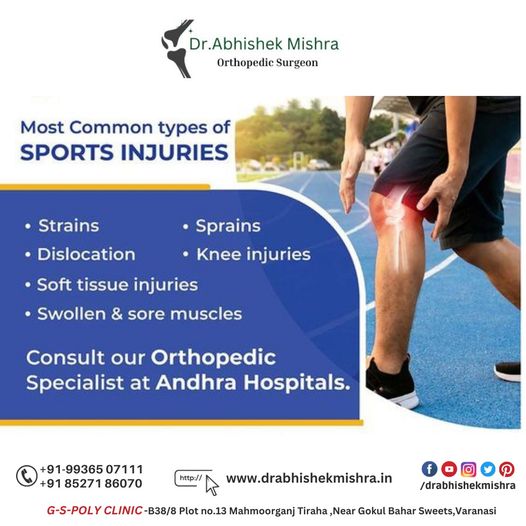Here are some common types of sports injuries:
- Sprains and Strains: These occur when ligaments (sprains) or muscles/tendons (strains) are stretched or torn. Common examples include ankle sprains and hamstring strains.
- Fractures: A fracture is a break in a bone. Fractures can be simple (a clean break) or compound (bone breaks through the skin). They can occur from sudden impacts or overuse.
- Dislocations: Dislocations happen when the bones in a joint are forced out of their normal position. Common dislocations occur in the shoulder, knee, and fingers.
- Concussions: Concussions are mild traumatic brain injuries caused by a blow to the head or violent shaking of the head and body. They can result in temporary loss of normal brain function.
- Tendonitis: Tendonitis is inflammation or irritation of a tendon, the thick fibrous cords that attach muscles to bones. It often occurs from repetitive overuse of a tendon.
- Rotator Cuff Injuries: The rotator cuff is a group of muscles and tendons that surround the shoulder joint, keeping the head of your upper arm bone firmly within the shallow socket of the shoulder. Injuries to the rotator cuff can cause pain and weakness in the shoulder.
- Shin Splints: This term refers to pain along the shin bone (tibia), which is typically caused by inflammation of the muscles, tendons, and bone tissue around the shin.
- ACL Tears: The anterior cruciate ligament (ACL) is one of the major ligaments in the knee. Tears or sprains in the ACL are common in sports that involve sudden stops, changes in direction, or jumping.
- Meniscus Tears: The meniscus is a rubbery, C-shaped disc that cushions your knee. A tear in the meniscus can occur from twisting or rotating the knee forcefully.
- Plantar Fasciitis: This is inflammation of the plantar fascia, the tissue that connects the heel bone to the toes. It causes heel pain and is common among runners and athletes who engage in activities that involve running or jumping.
Prevention, proper warm-up, conditioning, and using appropriate protective gear can help reduce the risk of these injuries. Prompt and proper treatment is essential for a speedy recovery and to prevent long-term complications.


No responses yet